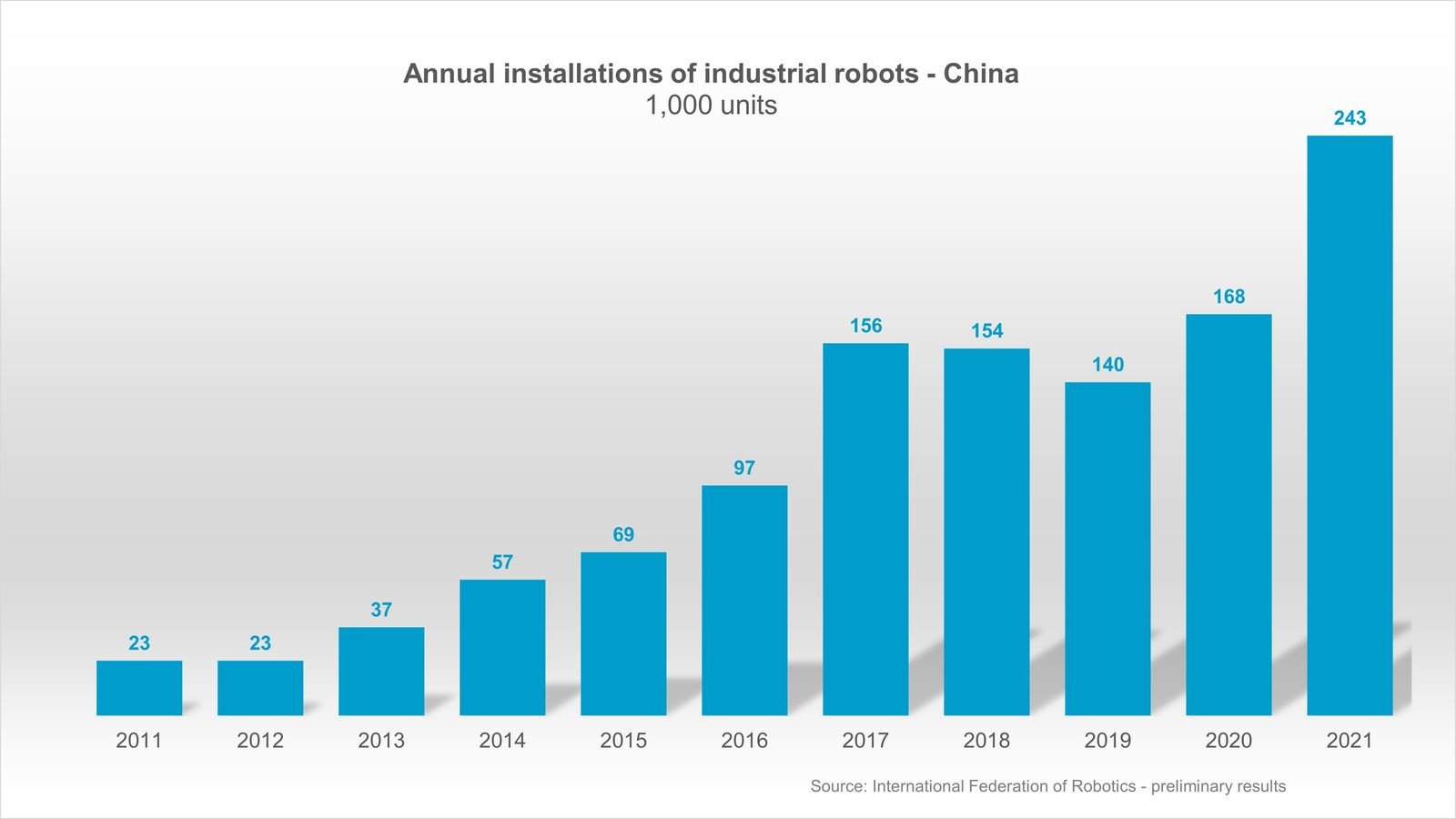AI & Robotics News and Discussions
Re: AI & Robotics News and Discussions
And remember my friend, future events such as these will affect you in the future
Re: AI & Robotics News and Discussions
And remember my friend, future events such as these will affect you in the future
Re: AI & Robotics News and Discussions
The idea of artificial intelligence overthrowing humankind has been talked about for decades, and in 2021, scientists delivered their verdict on whether we'd be able to control a high-level computer super-intelligence. The answer? Almost definitely not.
The catch is that controlling a super-intelligence far beyond human comprehension would require a simulation of that super-intelligence which we can analyze (and control). But if we're unable to comprehend it, it's impossible to create such a simulation.
Rules such as 'cause no harm to humans' can't be set if we don't understand the kind of scenarios that an AI is going to come up with, suggest the authors of the new paper. Once a computer system is working on a level above the scope of our programmers, we can no longer set limits.
"A super-intelligence poses a fundamentally different problem than those typically studied under the banner of 'robot ethics'," wrote the researchers.
"This is because a superintelligence is multi-faceted, and therefore potentially capable of mobilizing a diversity of resources in order to achieve objectives that are potentially incomprehensible to humans, let alone controllable."
And remember my friend, future events such as these will affect you in the future
-
weatheriscool
- Posts: 13569
- Joined: Sun May 16, 2021 6:16 pm
Re: AI & Robotics News and Discussions
Machine learning generates 3D model from 2D pictures
https://techxplore.com/news/2022-09-mac ... tures.html
by Brandie Jefferson, Washington University in St. Louis
https://techxplore.com/news/2022-09-mac ... tures.html
by Brandie Jefferson, Washington University in St. Louis
Researchers from the McKelvey School of Engineering at Washington University in St. Louis have developed a machine learning algorithm that can create a continuous 3D model of cells from a partial set of 2D images that were taken using the same standard microscopy tools found in many labs today.
Their findings were published Sept. 16 in the journal Nature Machine Intelligence.
"We train the model on the set of digital images to obtain a continuous representation," said Ulugbek Kamilov, assistant professor of electrical and systems engineering and of computer science and engineering. "Now, I can show it any way I want. I can zoom in smoothly and there is no pixelation."
The key to this work was the use of a neural field network, a particular kind of machine learning system that learns a mapping from spatial coordinates to the corresponding physical quantities. When the training is complete, researchers can point to any coordinate and the model can provide the image value at that location.
A particular strength of neural field networks is that they do not need to be trained on copious amounts of similar data. Instead, as long as there is a sufficient number of 2D images of the sample, the network can represent it in its entirety, inside and out.
The image used to train the network is just like any other microscopy image. In essence, a cell is lit from below; the light travels through it and is captured on the other side, creating an image.
Re: AI & Robotics News and Discussions


And remember my friend, future events such as these will affect you in the future
Re: AI & Robotics News and Discussions
The industrial robotics market in China achieved strong growth with a new record of 243,300 installations in 2021 – a rise of 44% compared to the previous year. These preliminary data have been published by the International Federation of Robotics.
“China was leading the global recovery after the Covid-19 pandemic and accounted for half of worldwide robot installations in 2021,” said Marina Bill, President of the International Federation of Robotics. “Growth is strong across all industries with electrical and electronics being the dominant sector – up 30% to 81,600 installations. The automotive industry also showed a strong recovery. This was mainly driven by electric vehicle manufacturing in China. It rose by 89% in 2021 with 50,700 installations.”

And remember my friend, future events such as these will affect you in the future
Re: AI & Robotics News and Discussions
And remember my friend, future events such as these will affect you in the future
-
weatheriscool
- Posts: 13569
- Joined: Sun May 16, 2021 6:16 pm
Re: AI & Robotics News and Discussions
Smart microrobots walk autonomously with electronic 'brains'
https://techxplore.com/news/2022-09-sma ... rains.html
by Cornell University
https://techxplore.com/news/2022-09-sma ... rains.html
by Cornell University
Cornell University researchers have installed electronic "brains" on solar-powered robots that are 100 to 250 micrometers in size—smaller than an ant's head—so that they can walk autonomously without being externally controlled.
While Cornell researchers and others have previously developed microscopic machines that can crawl, swim, walk and fold themselves up, there were always "strings" attached; to generate motion, wires were used to provide electrical current or laser beams had to be focused directly onto specific locations on the robots.
"Before, we literally had to manipulate these 'strings' in order to get any kind of response from the robot," said Itai Cohen, professor of physics. "But now that we have these brains on board, it's like taking the strings off the marionette. It's like when Pinocchio gains consciousness."
The innovation sets the stage for a new generation of microscopic devices that can track bacteria, sniff out chemicals, destroy pollutants, conduct microsurgery and scrub the plaque out of arteries.
The project brought together researchers from the labs of Cohen, Alyosha Molnar, associate professor of electrical and computer engineering; and Paul McEuen, professor of physical science, all co-senior authors on the paper. The lead author is postdoctoral researcher Michael Reynolds.
The team's paper, "Microscopic Robots with Onboard Digital Control," published Sept. 21 in Science Robotics.
-
weatheriscool
- Posts: 13569
- Joined: Sun May 16, 2021 6:16 pm
Re: AI & Robotics News and Discussions
New discovery suggests a novel strategy against harmful inflammation
https://medicalxpress.com/news/2022-09- ... ation.html
by The Scripps Research Institute
https://medicalxpress.com/news/2022-09- ... ation.html
by The Scripps Research Institute
A team led by Scripps Research scientists has uncovered key details of an immune cell process that frequently underlies excessive inflammation in the body. The findings could lead to new ways of preventing and/or treating inflammation-related conditions such as sepsis, arthritis, and coronary artery disease.
In the study, published September 21, 2022 in Nature Communications, the researchers showed that a multi-protein "molecular machine" called WASH has a powerful role in restraining excessive inflammatory activity by neutrophils, immune cells that are important early responders against infections.
"Our findings point to the possibility of future treatments that target this WASH-regulated pathway to inhibit neutrophil-driven inflammation while preserving most of neutrophils' anti-microbial effectiveness," says study senior author Sergio Catz, Ph.D., professor in the Department of Molecular Medicine at Scripps Research.
Neutrophils are workhorses of the mammalian immune system, comprising about two-thirds of the white blood cells that circulate through our bloodstreams. They combat invading microbes by engulfing and digesting them, and by releasing a variety of antimicrobial molecules via a process called exocytosis.